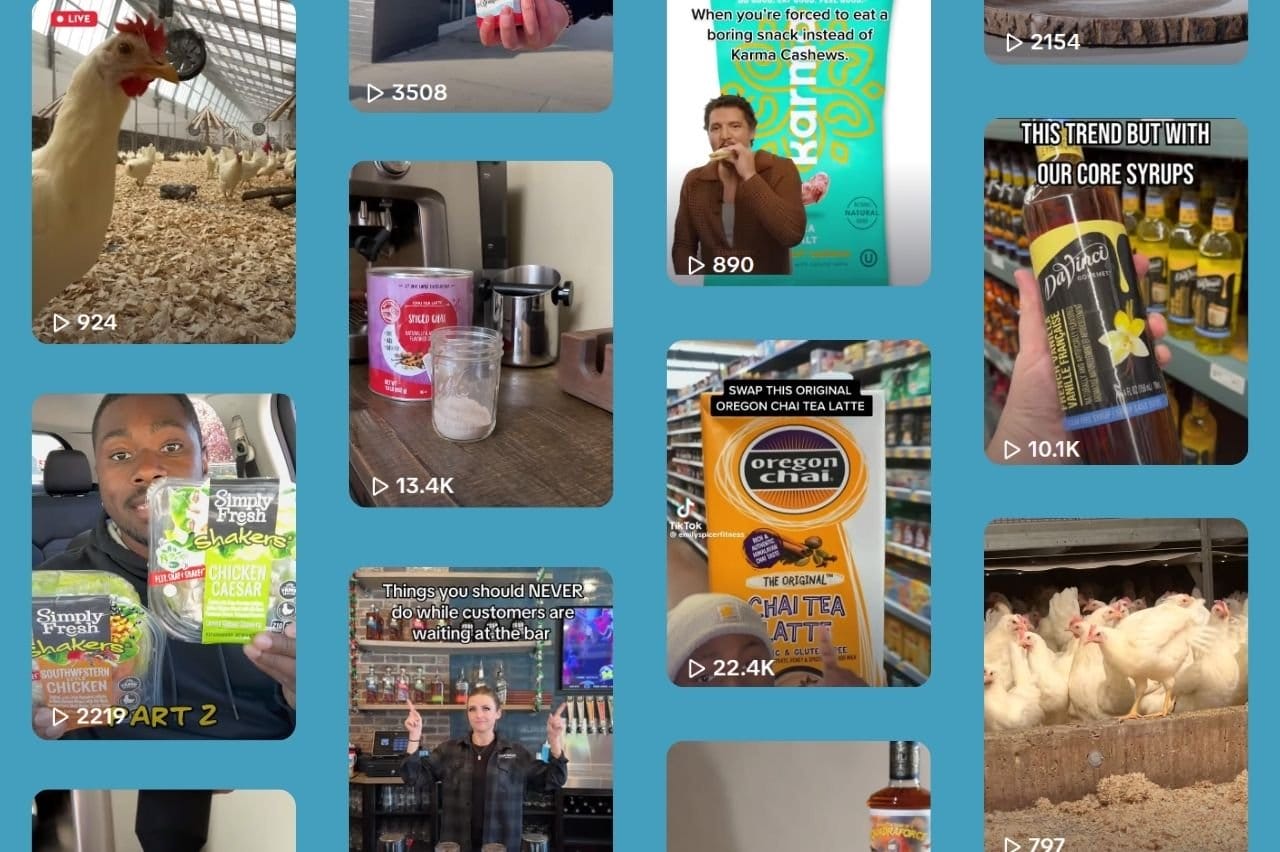Why Millennial Marketing Is Important For Food and Beverage Brands (And How To Market To Them)

Back in 2018, the Council of Economic Advisors for the White House officially dubbed the “Millennial Generation” as the group that would shape our country’s economy for the decades to come.
Here’s what this demo is doing right now:
-
Buying homes
-
Becoming managers
-
Raising families
-
And most importantly, spending their money!
You didn’t think we would write about millennials just because the writer of this blog is a proud member of the demographic, did you? Heck no.
>
“…millennials currently have the most members in the workforce, boasting an expected $1.4 trillion in disposable income at the beginning of the decade.”
As the largest generation in the states (nearly 88 million), millennials currently have the most members in the workforce, boasting an expected $1.4 trillion in disposable income at the beginning of the decade. However, this demographic still hasn’t reached the summit of its purchasing power. Isn’t that wild? It’s because this generation has been burdened with more student loans and family debt than any other demographic before it.
Still, the advent of millennial marketing is approaching rapidly, especially when it comes to the food and beverage industry.
Money talks
One-third of the total U.S. population is a ton of potential buyers.
Because of their population, millennials are the next baby boomers in terms of their economical value. And although debt is a drag now (will someone pay my student loans?), this group will get richer over time, specifically in rewarding food and beverage brands that offer maximum convenience, clean ingredients, and sustainable packaging.
The significance of millennials extends beyond these population numbers. They are the most diverse, educated, and tech-savvy, most coming of age in a recession.
>
“In other words: we are at the precipice of a millennial marketing takeover. ”
The battle for millennials (or as we like to be known, “digital natives”) starts online. If food and beverage brands can get their social media marketing right, they can grow fast because of the infinite reach of the internet.
In other words: we are at the precipice of a millennial marketing takeover.
Who Are They?
People who can claim millennial membership were born between 1980 to 2000. In that span of time, a lot of things changed in regard to the digital space.
The internet forever altered our global communication landscape. Everyone purchased a cell phone. Home computers were common sights in every home.
Before that, a digital dark age. Folks used DOS. Digital infrastructure filled entire buildings. Fortunately, that’s not the world millennials grew up in.
We, I mean millennials, have an affinity for technology that completely changed the retail space. Because of frequent economic disruptions, this generation has been afforded a different set of behaviors and experiences, in comparison to their parents.
Understanding their ways
As empaths, millennials are an emotional demographic. Therefore, tapping into their mindset is crucial. Constant exposure to advertising at all times has made them inherently skeptical when it comes to such marketing efforts. Because they are decentralized, they conduct their own research to form their own opinions.
>
“Online, food and beverage brands can cut through the clutter and target prospects in a non-intrusive way, by being authentic, informative, and engaging. ”
Obviously, this could be tricky for marketers. In turn, adaptation (especially in adapting a personal and engaging stance) can be found in social media marketing.
Online, food and beverage brands can cut through the clutter and target prospects in a non-intrusive way, by being authentic, informative, and engaging.
Brands that have a healthy balance between product promotion and online relationship building befriend the millennials first!
It’s about relationships over the point of sale.
When it comes to food and beverage, millennials talk with their wallets. While older generations embraced a wide variety of money-saving tactics to fill their pantry, Millennials won’t scrimp, especially on food items that are organic, healthy or sustainable, outpacing all generations before it in spending, and eagerly sharing their purchases online.
Outbound v Inbound
First of all, you’re going to choose the latter.
For anyone that hasn’t had a Marketing 101 course in a while, let me key you in.
Outbound marketing methods, at least to millennials, are completely old hat. These traditional marketing efforts include promoting through magazine ads, direct mail campaigns, and radio spots. Any of these mostly impersonal, monotonous ads aren’t going to go well with the customer-driven, personalized tactic this demographic craves.
>
“In total, only 1% of Millennials said outbound builds any kind of trust. ”
In total, only 1% of Millennials said outbound builds any kind of trust.
On the other hand, for food and beverage marketing, inbound is the way to go. These efforts include informative content, including e-books, videos, and blog posts (much like the one published right here). These should focus on recipes, with an emphasis on current trends (think about leaning into “mocktail” or “free spirits”). Inbound is an easy way for a brand to offer thought leadership in expertise. These consumers want guidance, including how-to’s, and tutorials.
The modern buyer
They are trendsetters. They dared where no man or woman would go. Millennials were the very first to dip their toes in the social marketplace.
In order for this demographic to consider a purchase, companies must have a mobile-friendly website and be present on numerous social media platforms. Otherwise, product promotion would be DOA.
Firebelly Marketing can help with this, but more on that later.
Don’t forget that making a social media account for your business costs you nothing. Paid promotion on these platforms is also much, much less expensive than outbound methods. Millennials will always look for information first on the internet, before making any kind of decision.
>
“For the source of their advertising. the demographic prefers web campaigns, mobile-friendly campaigns, and social campaigns. ”
For the source of their advertising. the demographic prefers web campaigns, mobile-friendly campaigns, and social campaigns.
Although they aren’t quite as tech-savvy as Generation Z, millennials are still keen on a digital world. As “foodies”, millennials are quick to share their reviews of food and beverage online, often communicating in online groups that share recipes, favorite products, recommendations, and more. They are also the first generation to truly figure out app-based delivery platforms, often turning to DoorDash or GrubHub to bring them their eats.
Growing families
Through this decade, more millennial families are emerging. The median age for having a child has elevated to the 30s, a far cry from the 20s range of previous generations. Obviously, this will bring larger grocery bills and other sustenance expenses later in life. Millennial families need to eat too.
>
“55% of millennials say family food shopping is about convenience; over 90% will do their grocery shopping online. ”
According to DoorDash, this demographic is building healthy habits, often choosing organic options on shelves in comparison to non-organic offerings. Food needs to be quick and easy to prepare, without sacrificing any nutritional benefits. The best part: if you’re a healthy company with an eco-friendly product, you’re in luck. This socially conscious group of consumers is willing to pay even more for these sustainable products.
As per MorganMyers, 55% of millennials say family food shopping is about convenience; over 90% will do their grocery shopping online.
Brand activism
Yeah, millennials have a green thumb. Displaying environmental and social responsibility is definitely a feature that could appease buyers’ considerations. To this demographic, it’s not about the impact leveraged on themselves; it’s the influence the brand or product has on the lives of other people. If a brand starts behaving unethically, they have no qualms about cutting ties.
>
“73% of global millennials are willing to pay extra for sustainable offerings and 66% of global consumers are willing to pay more for sustainable brands.”
According to a Nielsen CSR study, 73% of global millennials are willing to pay extra for sustainable offerings and 66% of global consumers are willing to pay more for sustainable brands. In other words, millennials are prepared to make personal sacrifices to make an impact on the issues they care about.
As per Chef’s Best, out of all the demographics, Millennials are most likely to prefer ethical consumption when it comes to their food. They tend to be more interested in environmental sustainability, fair trade, and zero waste, purchasing products based on these factors.
At Firebelly Marketing, we know millennials. After all, most of our workforce belongs to this demographic. To get help marketing to millennials, or any other generation for that matter, give us a holler over here.



